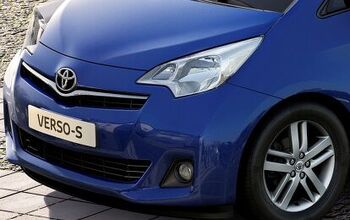What's Wrong With This Picture: The High Cost Of High Fuel Economy Edition
As the industry (or at least parts of it) and the federal government face off over forthcoming 2017-2025 CAFE/emissions standards, a Center for Automotive Research study is getting more play than ever from an industry that seeks to portray the high cost of fuel economy improvements as being not worth the additional costs to consumers. CAR has yet to publish its full study, but it’s clearly intended to counter an offensive from groups like the Consumer Federation of America, which uses its own study to show that CAFE regulation will actually save consumers money. This battle, over the cost to industry and consumers of passing a 62 MPG standard for 2025, has been playing out for months now, and will continue to go back and forth over the rest of this summer. And sure enough, the Union of Concerned Scientists and the National Resources Defense Council have both hit back against the CAR study, calling it “industry-advocate propaganda” in the Detroit News and arguing that it underestimates future reductions in technology costs.
Meanwhile, another report from the University of Michigan’s Transportation Research Institute shows that CAFE increases could yield big dividends to Detroit (although we have our doubts about that one). The point is that the 2017-2025 emissions standard seems to be turning into something of a Rorschach Test, as there’s research out there showing nearly every possible outcome, good and bad, coming from a standards hike ( here is one way the government estimates cost increases). We encourage anyone who is interested to avail themselves of the data and make a case one way or the other in our comments section. Ultimately though, since California’s Air Resoures Board is leading the federal government on this issue anyway, expect CAR’s research to be ignored (or used to create some kind of “CAFE compensation”) as a 62 MPG 2025 standard is likely too far along to stop at this point.
More by Edward Niedermeyer
Latest Car Reviews
Read moreLatest Product Reviews
Read moreRecent Comments
- Lou_BC A pickup for most people would be a safe used car bet. Hard use/ abuse is relatively easy to spot and most people do not come close to using their full capabilities.
- Lorenzo People don't want EVs, they want inexpensive vehicles. EVs are not that. To paraphrase the philosopher Yogi Berra: If people don't wanna buy 'em, how you gonna stop 'em?
- Ras815 Ok, you weren't kidding. That rear pillar window trick is freakin' awesome. Even in 2024.
- Probert Captions, pleeeeeeze.
- ToolGuy Companies that don't have plans in place for significant EV capacity by this timeframe (2028) are going to be left behind.

































Comments
Join the conversation
Look at it this way, Why do Europeans drive smaller cars with smaller motors? To get the most of their fuel economy since gas is around $6 dollars a gallon if not more already. Hens the preference for A/B/C segment cars that get the equivalent to 38-45mpg highway and 30-32 city at the very least. I'm looking at getting a small car that does around that myself and I live in the US and yes, I DO take the bus to work but use my car for pretty much everything else when I don't have to drive into work and I have a bus pass FROM work to compensate for the bus fare.
When has the "Center for Automotive Research" ever gotten anything right? They are nothing but a special interest lobbying group which will spin things to support their position.